40 labels on food explained
How To Read Food and Beverage Labels | National Institute on Aging There are three types of product dates commonly printed on packaged foods and beverages: "Sell by" tells how long the manufacturer suggests that a store should sell items such as meat, poultry, eggs, or milk products. Make sure you buy by this date. "Use by" tells how long items will be at peak quality. 9 Food Packaging Labels Explained - Dr. Sears Wellness Institute Labels can be misleading, especially if you don't learn to read between the lines and examine the fine print. Knowing what words on the label really mean is a big step toward making nutritious choices at the supermarket. Familiarize yourself with these 9 food labels so you can see the truth beyond the marketing. 1. "Pure"
How to understand food labels - Eat For Health Sometimes labels will include nutrition content claims like 'low fat', 'reduced salt' or 'high fibre'. These claims can only be used if the food meets certain criteria. For example, with a 'good source of calcium' claim, the food must contain more than a set amount of calcium. While nutrition content claims can generally guide ...
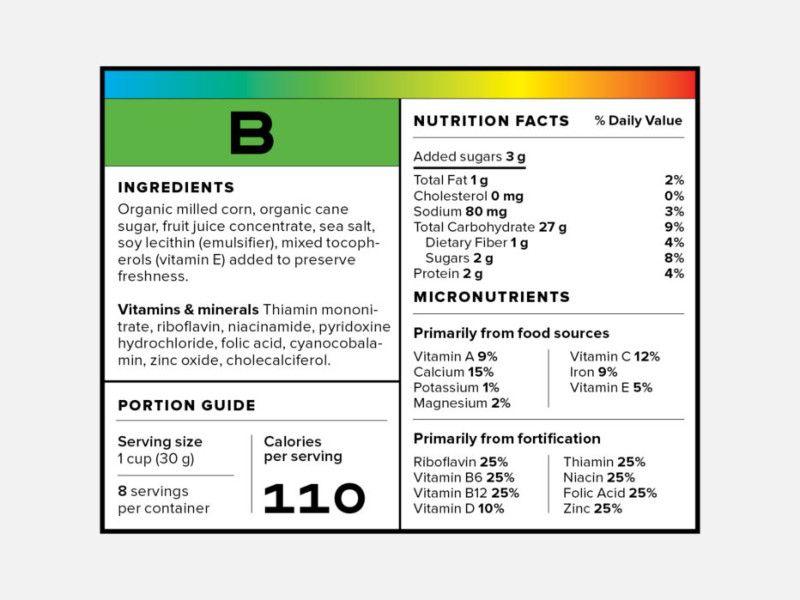
Labels on food explained
Food labels explained | BHF Food labels explained Learn how to understand front-of-pack food labels, and how they can help you make heart-healthy choices more easily. When the Government recommended a front-of-pack food labelling system to all food retailers and manufacturers, we were thrilled that our campaigning efforts had paid off. Use-By, Sell-By, Best-By: Food Dating Labels Explained Labels Explained. "Best if Used By" or "Best if Used Before": The date the product will have its best flavor or quality. "Use-By": The last date the product will likely be at its ... Understanding Food Labels | The Nutrition Source | Harvard T.H. Chan ... The information on food labels is intended to help consumers become savvy about their food choices. The front, back, and sides of a package are filled with information to inform us what the food contains and to provide guidance in making healthier selections of processed foods.
Labels on food explained. Food Labels Explained | Goodheart Animal Sanctuaries Meat, dairy and egg labels can be misleading. Although around 80% of UK farm animals are reared in intensive systems, there's no law requiring food labels to say exactly how that animal has been raised (except for whole hen's eggs; powdered or liquid eggs require no such labelling). Check the label | Food Standards Agency The traffic light label is colour coded and shows that green is low in a particular nutrient, amber means medium and red is high in a nutrient. means the product is high in a nutrient and you should try to cut down, eat less often or eat smaller amounts. means medium. Looking at labels - British Nutrition Foundation Nutrition labelling terms explained ... Other information on food labels. As well as nutritional information, food labels also provide other information about foods and drinks. List of ingredients. If a food or drink product has two or more ingredients (including any additives), they must all be listed. How to read food labels: MedlinePlus Medical Encyclopedia Food labels tell you the nutrition facts about the foods you buy. Use the food labels to help you choose healthier foods. What to Look for Always check the serving size first. All the information on the label is based on the serving size. Many packages contain more than 1 serving.
Food Labels Explained - Farm Aid Organic labels can be found on produce, dairy, meat, processed foods, condiments and beverages. Food products labeled "organic" must contain at least 95% organic ingredients with no synthetic growth hormones, antibiotics, pesticides, biotechnology, synthetic ingredients or irradiation used in production or processing. Food labels - Better Health Channel Use-by and best-before dates on food labels. Foods with a shelf life of less than 2 years must have a best-before or use-by date. These terms mean different things. Best-before date on food labels. The best-before date refers to food quality - food stored in the recommended way will remain of good quality until that date. Figuring Out Food Labels (for Kids) - Nemours KidsHealth The Nutrition Facts label gives you information about which nutrients (say: NEW-tree-ents) are in the food. Food contains fat, protein, carbohydrates, and fiber. Food also contains vitamins, such as vitamin D, and minerals, such as calcium and iron. Your body needs the right combination of nutrients to work properly and grow. Food Labels Explained: What Do All Those Terms Really Mean? This label has the most specific criteria and legal weight. 100% organic means that the entire product contains only organically produced ingredients. "Organic" means the product has to be made with 95% organically produced ingredients. "Made With Organic Ingredients" means 70%.
Food Label Terms and What They Really Mean - dummies The food must be low in fat or fat free. Plus, it must reflect the amount of fat present in a serving. In other words, if a food contains 5 grams of fat in a serving, it can be labeled "95 percent fat free.". Low-calorie. Fewer than 40 calories per serving. Many dieters find that portion control is real tricky. Food labelling | Food Standards Scotland Food labels are an excellent way of helping us make healthier choices, and many food and drink manufacturers and retailers use colour coded front of pack nutrition labels. These labels provide easy to understand information about calories and the levels of fat, saturated fat, sugars and salt in a product. How to Read Nutrition Information → Food Labels EXPLAINED Learn how to read nutrition information on another level! Food labels EXPLAINED.Get our Fit Mother 30-Day Fat Loss Program here → ... 10 Rules For Reading a Food Label - YouTube The basics for understanding a nutrition label are important for every person to know. This video presents clear rules to properly read a food label. This vi...
Understanding food labels | Diabetes UK The labels show how many calories are in the food or drink and are also colour coded to show whether the food is low (green), medium (amber) or high (red) in fat, saturated fat, sugar and salt. The information on the front of the pack also tells you how the portion of the food contributes to the Reference Intake (RI) of an adult.
How to Understand and Use the Nutrition Facts Label | FDA In the following Nutrition Facts label we have colored certain sections to help you focus on those areas that will be explained in detail. Note that these colored sections are not on the actual...
NCDA&CS - Kid's World - Understanding Food Labels Fat, saturated fat, cholesterol, total carbohydrate, fiber, sugars, protein, vitamins A and C, calcium and iron are required on the label. Other nutrients may be listed if the company would like to list them. Nutrients are substances found in food that are needed for good health. Your body can't make nutrients, so they must be supplied by food.
How To Decode & Understand Food Labels (in 5 Seconds) Always scan through the first 5 food ingredients as they generally make up the majority of the product. Click To Tweet 2. Ignore Front Panel Advertisements The label is meant to draw you in, capture attention, and elicit an emotional response. That's why we skipped it first. Marketers are paid handsomely to hack your emotions.
Understanding Food Labels - Nutrition: Science and Everyday Application The FDA uses the following definitions for interpreting the %DV on food labels:4 5%DV or less means the food is low in a nutrient. 10% to 19%DV means the food is a "good source" of a nutrient. 20%DV or greater means the food is high in a nutrient.
Food Labels And Nutrition Terms Explained - Beezzly Understanding Food Labels This sign means saturated fats. These are quite harmful since, when being intaken too much, they can cause heart problems and raise cholesterol. So try to purchase food without this marking or at least buy it more seldom. Carbohydrates Carbs can be complex (starchy food) and simple (added sugars).
What Do Food Labels Mean? - FoodPrint The grocery aisles are chock full of food labels and claims, calling out everything from "natural" to "organic." It can be hard to figure out which labels matter and which are meaningless marketing claims. Some food labels are certifications. This means they meet certain standards and have been verified by a third-party certifier.
Food labels - NHS These labels provide information on the number of grams of fat, saturated fat, sugars and salt, and the amount of energy (in kJ and kcal) in a serving or portion of the food. But be aware that the manufacturer's idea of a portion may be different from yours. Some front-of-pack nutrition labels also provide information about reference intakes.
Food Labeling: MedlinePlus The information on a food label can help you see how a certain food or drink fits into your overall diet. The label lists, per serving,: The number of calories Fats, including total fat, saturated fat, and trans fat Cholesterol Sodium Carbohydrates, including fiber, total sugar, and added sugar Protein Vitamins and Minerals
Understanding Food Nutrition Labels | American Heart Association Learn what to look for on the label. 1 - Start with the serving information at the top. This will tell you the size of a single serving and the total number of servings per container (package). 2 - Next, check total calories per serving and container.
Understanding Dates on Food Labels - Eatright.org These are found primarily on perishable foods such as meat and dairy products. "Closed Dating" is a series of production numbers used by the manufacturer to indicate when a product was made. They primarily appear on shelf stable products such as cans and boxes of food. Except for infant formulas, product dates are not expiration dates.
Understanding Food Labels | The Nutrition Source | Harvard T.H. Chan ... The information on food labels is intended to help consumers become savvy about their food choices. The front, back, and sides of a package are filled with information to inform us what the food contains and to provide guidance in making healthier selections of processed foods.
Use-By, Sell-By, Best-By: Food Dating Labels Explained Labels Explained. "Best if Used By" or "Best if Used Before": The date the product will have its best flavor or quality. "Use-By": The last date the product will likely be at its ...
Food labels explained | BHF Food labels explained Learn how to understand front-of-pack food labels, and how they can help you make heart-healthy choices more easily. When the Government recommended a front-of-pack food labelling system to all food retailers and manufacturers, we were thrilled that our campaigning efforts had paid off.


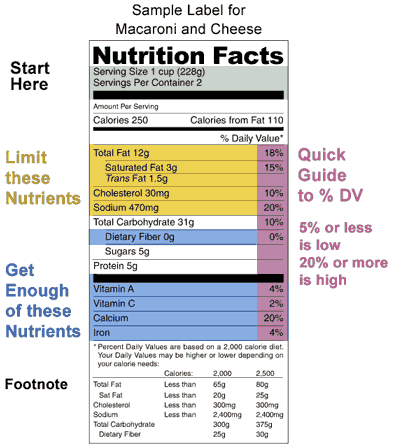

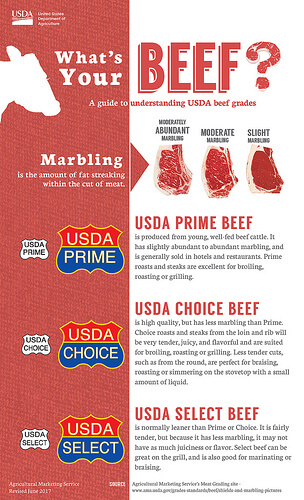



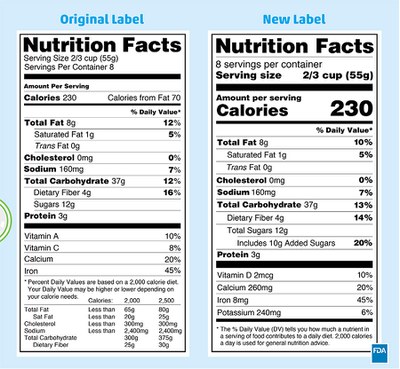

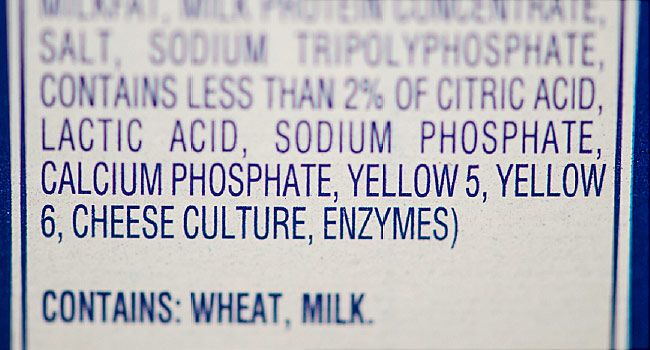
Post a Comment for "40 labels on food explained"